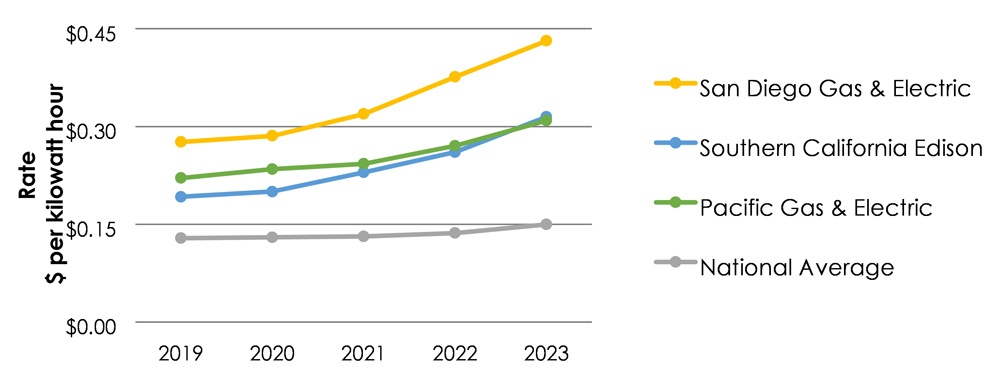MRC Endorses IROL-CIP Cost Recovery
VALLEY FORGE, Pa. — The PJM Markets and Reliability Committee endorsed a proposal to create a cost-of-service payment structure for generators that require upgrades following being designated critical to the derivation of an interconnected reliability operating limit (IROL) under NERC’s critical infrastructure protection (CIP) standards. (See “PJM, Monitor Review IROL-CIP Proposals,” PJM MRC/MC Briefs: May 31, 2023.)
PJM’s Darrell Frogg previously told the committee that the proposal would function similarly to PJM’s existing black start cost-recovery mechanism, with generators submitting costs to the RTO and Monitor to review, and reviews collected through charges to market participants.
Supporters during the Operating Committee discussions on the proposal argued that having a facility declared critical by NERC and required to make reliability upgrades is outside of their control, can carry significant costs and is unpredictable. The OC endorsed the PJM proposal on March 9 with 89% support, while a competing proposal from the Independent Market Monitor received 11%. (See PJM OC Briefs: March 9, 2023.)
Susan Bruce, representing the PJM Industrial Customer Coalition (ICC), questioned if there are any cost minimization functions taken into consideration and what costs PJM can share with stakeholders regarding IROL-CIP expenses.
Frogg said security concerns limit how transparent they can be about specific costs, but there are oversight mechanisms in place and cost estimates of IROL-CIP upgrades in general can be shared, similar to data sharing around black start costs.
Independent Market Monitor Joe Bowring said the definition of which resources can be designated as critical is vague and argued that it’s a slippery slope to create new cost-of-service structures, rather than putting the costs in the markets.
“This is not like black start; it’s opening a whole new opportunity to non-market cost-of-service recovery services,” he said.
“PJM operates markets. PJM is not a cost-of-service regulator. These costs are part of the cost of doing business as a generator in PJM markets. Generators do not offer to share excess revenues when regulatory changes result in more revenues rather than more costs. This proposal is inconsistent with the PJM market design,” he said.
Greg Poulos, executive director of the Consumer Advocates of the PJM States (CAPS), said advocates appreciate Bowring’s efforts to find a market solution and believe the question of whether this should be a cost of service is best addressed at FERC. Several advocates abstained from Thursday’s acclamation vote on the proposal.
“There’s always a concern, I think a growing concern in some respects, about cost-of-service mechanisms at the PJM level,” he said.
Dominion’s Jim Davis said ensuring that generators can recover their costs avoids putting operators in the positions of considering retirement after being found critical due to the cost of making the required upgrades.
Frogg said costs will be recovered over 12 months and only those upgrades that are required to comply with CIP standards and would not be made had the facility not been designated critical would be recoverable under the proposal.
Craig Glazer, PJM vice president of federal government policy, said the proposal is consistent with other formula rates approved by FERC and implemented by the RTO. While PJM determines which facilities are critical and which upgrades are legitimate, it must follow the formula approved by the commission.
“It’s not like whatever you believe is reasonable you go with,” he said.
Bowring responded that the fact that it’s possible to define a cost-recovery mechanism is not a reason to do so. He said the proposal raises the possibility that there will be proposals for more cost-of-service recovery mechanisms in the markets, undermining the fundamentals of the PJM market design.
PJM Gives Date for Winter Storm Elliott Presentation
A detailed report on the impact the December 2022 winter storm had on PJM’s operations and generator performance during the event will be released on July 17, PJM Vice President of Market Design and Economics Adam Keech told the MRC. A workshop for stakeholders to discuss the report has been scheduled for July 25, with the aim of giving stakeholders time to digest the document.
“Right now, the paper is fairly hefty, so it may take an amount of time to get through it,” Keech said.
PJM provided a preview of the report’s findings during a May 17 critical issue fast path (CIFP) process meeting, a forum that was in part convened in response to the storm’s impact. (See PJM Presents Lessons Learned from Elliott, More CIFP Presentations.)
During that meeting, PJM’s Glen Boyle said Elliott was the latest winter storm demonstrating what the RTO has concluded is a shift in reliability risks toward the winter, rather than its longtime assumption that risk correlated with summer load peaks.
The analysis has found that market participants require additional education regarding performance assessment intervals (PAIs) and the penalties they carry for generators underperforming during an emergency. It also found instances where the penalties were not aligned with dispatch basepoints due to resources’ obligations not taking their specific characteristics into account.
Boyle laid out a series of recommendations that PJM had reached as a result of the analysis at that point, including an overhaul of capacity market incentives, re-evaluating whether energy efficiency and demand response resources have performed in a way that matches their expected reliability contributions and investigation of poor performance of non-retail, behind-the-meter generation.
Stakeholders Approve Tariff Clarification on Smooth Supply Curves
The MRC endorsed proposed tariff changes aimed at clarifying that smooth supply curves will only be published for Base Residual Auction (BRA) results and not for Incremental Auctions (IAs). (See “First Read on Smooth Supply Curve Quick Fix,” PJM MIC Briefs: April. 12, 2023.)
PJM’s Skyler Marzewski said the new language consists of adding “for each Base Residual Auction” to a paragraph in Attachment DD section 5.11(e) pertaining to how the supply curve will be graphed after the auction.
Road Path for CAPSTF Discussed
The Clean Attribute Procurement Senior Task Force (CAPSTF) is on hiatus until September after more than 90% of stakeholders participating indicated that the group should suspend discussions until the CIFP has completed its work on drafting changes to the capacity market because of overlap in the two groups’ deliberations. A second vote also found that none of the three conceptual designs drafted by the task force reached 50% support.
Scott Baker, PJM’s facilitator for the task force, said the group will reconvene in September to determine if it should continue working toward market-design changes based on the final product created through the CIFP process or if the CAPSTF should be sunset.
He said Package A would create a forward clean energy market with a PJM renewable energy certificate and a PJM clean energy attribute certificate differentiated on the eligible technologies. Package B would have a third product, a clean capacity certificate. The certificates in Package A would be unbundled from energy, while the added certificate under Package B would be unbundled from capacity.
Package C would create a two-auction system, with a state attributes procurement auction (SAPA) that would provide the locational marginal reliability value of participating clean resources and a minimum reliability attributes auction in which PJM would procure enough capacity to satisfy locational reliability needs netted against the impact of SAPA resources’ impact on load.
Calpine’s David “Scarp” Scarpignato said the company supports the clean energy transition but believes the capacity market is not the best place for market-design changes to be made with the goal of incentivizing new renewable generation.
“There might be better ways through the energy market or maybe bilaterals to get a more effective transition to clean energy,” he said.
Ken Foladare of the Tangibl Group said the CAPSTF has engaged in fruitful discussion, but agrees the CIFP process is likely to yield significant changes to the capacity market and its work should be completed before the task force continues drafting design packages.
Constellation’s Adrien Ford noted that the task force’s vote to go on hiatus had a significant number of abstentions and suggested the reason could be that it was an advisory vote on how the group should best direct its work. She said the company supports Package A and hopes that the work on finalizing the proposal can continue.
PAI Notifications to Include More Information
PJM’s Chris Pilong said the RTO plans to include information about the proposed revisions to conditions under which a PAI can be declared in any future notifications sent out when an interval begins. Should a PAI be called in the “limbo period” before FERC rules on PJM’s filing, email notifications will include the proposed language and the impact it could have on settlements if FERC were to accept the change. (See PJM Board Rejects Lowering Capacity Performance Penalties.)
If the order were to partially approve the filing or a deficiency notice issued prior to a PAI being called, notifications would include information about what changes to the proposal are required.
If FERC were to approve the filing, software changes would be developed to allow more precise notifications to be sent out and information would include what changes have been made. Notifications would go out to all stakeholders subscribed to email lists for the standing committees.
Vitol’s Jason Barker said he’s concerned about the potential for notifications to be sent out for false positives or when the criteria for a PAI have not all been met, adding that any actions PJM can take to give a more assertive signal to market participants are welcome.
Old Dominion Electric Cooperative’s Mike Cocco urged PJM to develop a way for data about emergency conditions to be pushed to members, rather than require them to go to PJM’s Data Monitor portal to monitor for any changes.
Members Committee
State Advocates Concerned About Rising Transmission Costs
Speaking to the Members Committee Thursday, Poulos said consumer advocates are concerned about the rising cost of transmission for end customers and the lack of market-driven ways of containing costs.
“It is now about 28% of the bill for wholesale-cost customers,” he said.
Exelon’s Alex Stern said transmission development is mainly driven by state and federal policy, rather than markets. Grid reliability concerns have driven investments for decades and the challenges presented by the clean energy transition have only exacerbated the issue.
“A lot of what we’re seeing in real time as far as transmission investment is driven by regulatory signals and from my perspective that’s how it should be. Transmission owners will continue to discharge their obligation to ensure grid reliability is preserved. The regulators need to keep doing the job on their end as well and if they feel the grid is reliable enough or if they feel the transition is happening too fast, then they need to send those signals as well,” he said.





